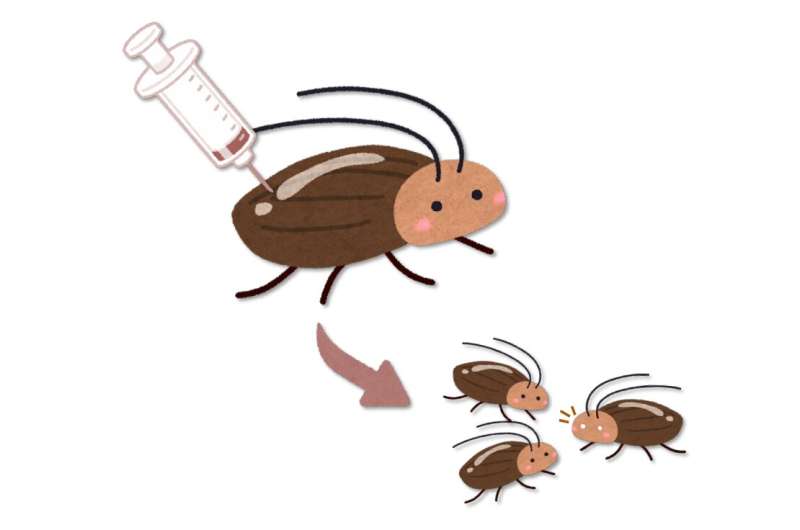
Cell Press published a study on May 16th on the use of a CRISPR-Cas9 approach to modify genes in roaches. Direct parental is a simple and efficient technique that involves the injection of materials into female adults where eggs are developing rather than into the embryos themselves.
Senior study author Takaaki Daimon of Kyoto University says that insect researchers have been freed from the annoyance of egg injections. The method should work for more than 90 percent of insect species.
Microinjection of materials into early embryos is what current approaches for insect gene editing require. Due to their unique reproductive system, past studies have not achieved genetic manipulation of roaches. The drawbacks of conventional methods for genome editing on insect species include expensive equipment, a specific experimental setup for each species, and highly skilled laboratory personnel.
Daimon and his team injected RNPs into the main body of adult female roaches in order to introduce heritable changes in developing egg cells. The proportion of edited individuals out of the total number of individuals hatched could be as high as 22%. The red flour beetle had an efficiency of more than 50%. The researchers generated gene knockin beetles by co-injecting single-stranded oligonucleotides and Cas9 RNPs, but the efficiency is low and should be further improved.
The application of DIPA-CRISPR in two distant species shows its potential for broad use. The approach is not applicable to all insect species. Experiments show that the most important factor for success is the stage of the adult females injected. Good knowledge of ovary development is required by DIPA-CRISPR. This can be difficult in some species because of the different life histories and reproductive strategies of insects.
The application of gene editing to a wide variety of model and non-model insect species is possible with the use of DIPA-CRISPR. The technique requires minimal equipment for adult injection, and only two components. Standard Cas9 can be used for adult injection, eliminating the need for custom engineering of the protein.
By improving the DIPA-CRISPR method and making it even more efficient and versatile, we may be able to enable genome editing in almost all of the more than 1.5 million species of insects, opening up a future in which we can fully utilize the amazing biological functions of insects. These include agricultural and medical pests, as well as important fishery resources such as shrimp and crabs.
More information: Takaaki Daimon, DIPA-CRISPR is a simple and accessible method for insect gene editing, Cell Reports Methods (2022). DOI: 10.1016/j.crmeth.2022.100215. www.cell.com/cell-reports-meth … 2667-2375(22)00078-9 Journal information: Cell Reports Methods Citation: CRISPR now possible in cockroaches (2022, May 16) retrieved 16 May 2022 from https://phys.org/news/2022-05-crispr-cockroaches.html This document is subject to copyright. Apart from any fair dealing for the purpose of private study or research, no part may be reproduced without the written permission. The content is provided for information purposes only.